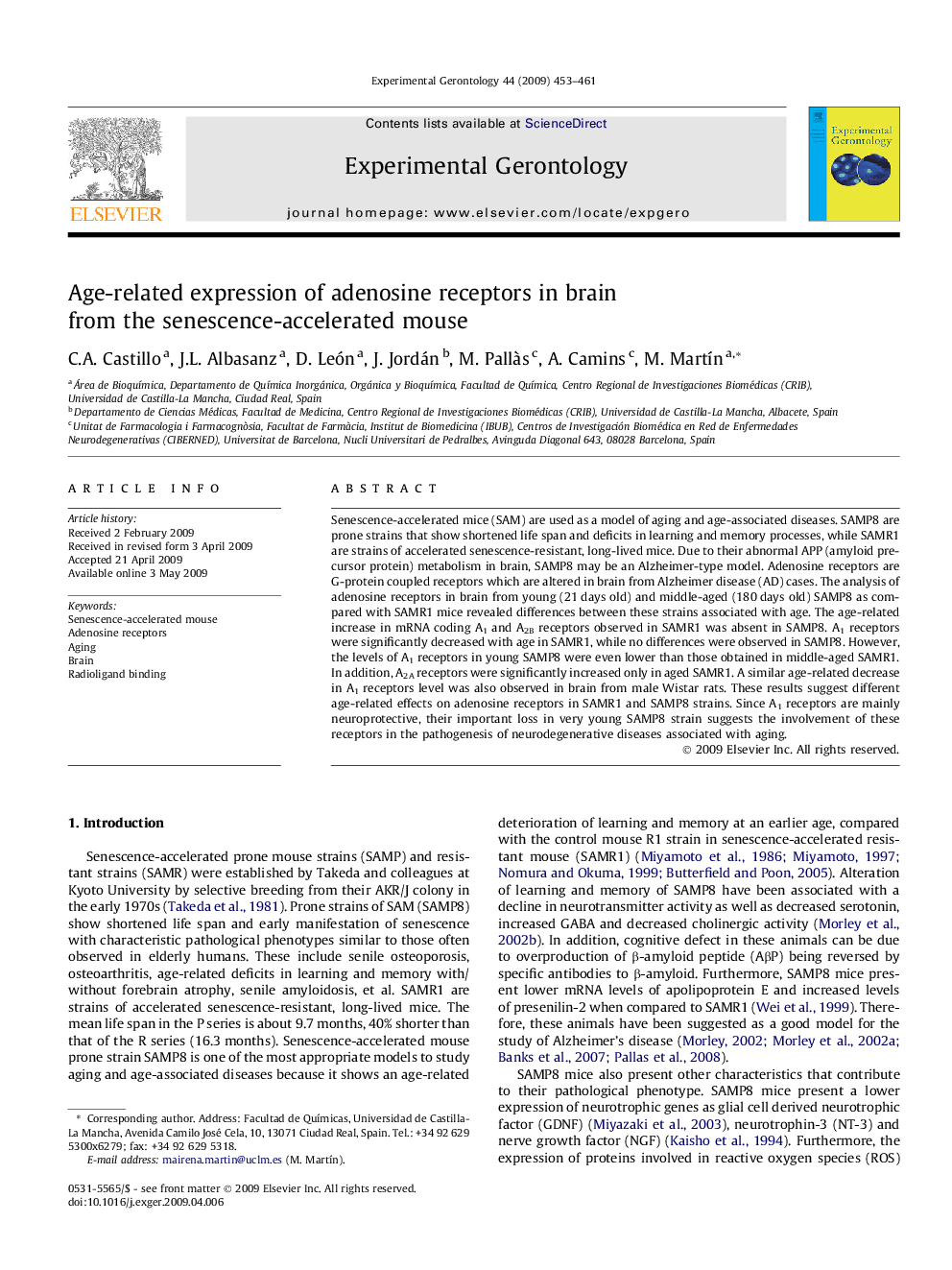| Article ID | Journal | Published Year | Pages | File Type |
|---|---|---|---|---|
| 1906921 | Experimental Gerontology | 2009 | 9 Pages |
Senescence-accelerated mice (SAM) are used as a model of aging and age-associated diseases. SAMP8 are prone strains that show shortened life span and deficits in learning and memory processes, while SAMR1 are strains of accelerated senescence-resistant, long-lived mice. Due to their abnormal APP (amyloid precursor protein) metabolism in brain, SAMP8 may be an Alzheimer-type model. Adenosine receptors are G-protein coupled receptors which are altered in brain from Alzheimer disease (AD) cases. The analysis of adenosine receptors in brain from young (21 days old) and middle-aged (180 days old) SAMP8 as compared with SAMR1 mice revealed differences between these strains associated with age. The age-related increase in mRNA coding A1 and A2B receptors observed in SAMR1 was absent in SAMP8. A1 receptors were significantly decreased with age in SAMR1, while no differences were observed in SAMP8. However, the levels of A1 receptors in young SAMP8 were even lower than those obtained in middle-aged SAMR1. In addition, A2A receptors were significantly increased only in aged SAMR1. A similar age-related decrease in A1 receptors level was also observed in brain from male Wistar rats. These results suggest different age-related effects on adenosine receptors in SAMR1 and SAMP8 strains. Since A1 receptors are mainly neuroprotective, their important loss in very young SAMP8 strain suggests the involvement of these receptors in the pathogenesis of neurodegenerative diseases associated with aging.
